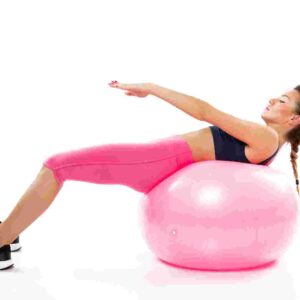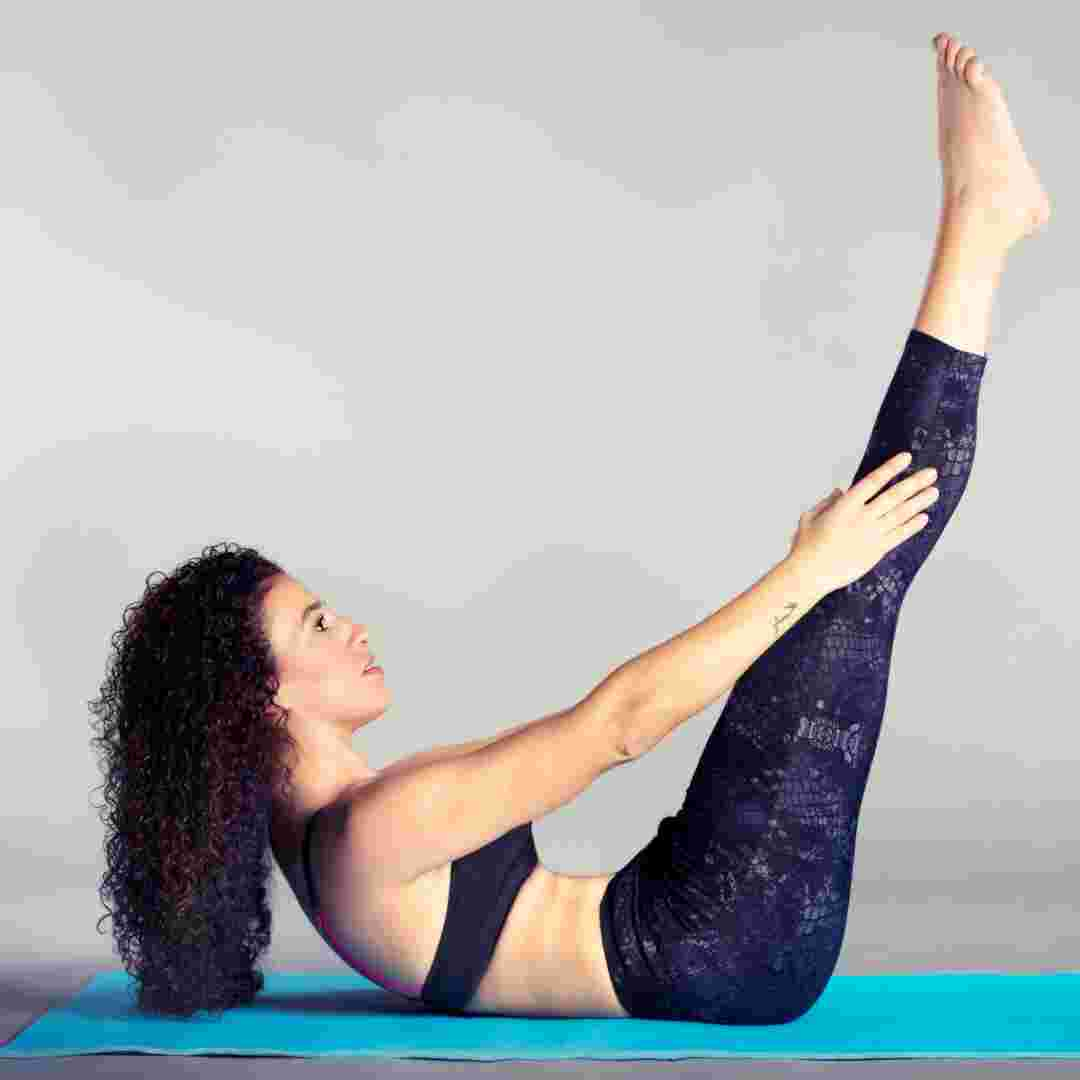Contents Table
Introduction
The 5 Pilates Block Exercises for Core Strength
How Pilates Blocks Improve Balance and Flexibility
Pilates Block: Essential for Deeper Stretching and Strengthening
Q&A
Conclusion
Use a Pilates block to improve your practise."
Introduction
Pilates blocks give support, stability, and resistance. This tool can adjust or intensify exercises, enhance alignment, and promote flexibility. The foam or cork block comes in various sizes and forms to suit different body types and experience levels.
The 5 Pilates Block Exercises for Core Strength
Pilates strengthens core muscles, improves flexibility, and aligns the body. Low-impact workouts are suitable for all ages and fitness levels. Essential Pilates instruments include the Pilates block. This compact, lightweight item improves Pilates alignment, stability, and balance. Five Pilates block exercises to improve your core are covered in this article.
1. The Bridge
Bridge is a traditional Pilates exercise for glutes, hamstrings, and lower back. This workout benefits from a Pilates block for core engagement. Lay on your back with your knees bent and feet flat to do the bridge with a Pilates block. Place the block above your knees between your thighs. Squeeze the block with your thighs as you elevate your hips to engage your inner thighs and core.
2. Hundred
The hundred is a difficult belly Pilates exercise. The hundred with a Pilates block is done on your back with bent knees and flat feet. Lift your head, neck, and shoulders with the block in your hands. Pump your arms up and down while inhaling and exhaling five times with your legs extended onto a table. The block will engage your shoulder blades and stabilise your upper body as you squeeze it.
3. The Teaser
Advanced Pilates exercises like the teaser demand core strength and control. This exercise benefits from a Pilates block for alignment and balance. Sit on the floor with your legs in front of you and arms overhead to do the teaser with a Pilates block. Lift your legs and arms while holding the block. Roll your spine up one vertebra at a time to sit up. Control your descent, holding the block in your hands.
4. Plank
Planks work the core, arms, and legs. Using a Pilates block can help engage your inner thighs and pelvic floor. Start in a push-up with your hands behind your shoulders and feet hip-width apart to complete the plank with a Pilates block. Place the block above your knees between your thighs. Plank for 30–60 seconds with your core engaged.
5. The Side Plank
Oblique muscles are targeted by the side plank. This exercise benefits from a Pilates block for alignment and balance. Start in a plank position on your right side with your right hand under your shoulder and your left hand grasping the Pilates block. Hips up, left arm to ceiling. Switch sides after 30–60 seconds of side planking.
Pilates blocks are versatile tools that can improve your Pilates practise and core strength. Workouts using these five Pilates block movements improve alignment, stability, and balance. To maximise Pilates advantages, engage your core muscles and breathe deeply throughout each exercise.
How Pilates Blocks Improve Balance and Flexibility
Pilates builds core strength, flexibility, and balance. Low-impact workouts are suitable for all ages and fitness levels. Pilates blocks are utilised. This compact, lightweight tool can improve Pilates balance and flexibility.
The Pilates block is adaptable and multipurpose. A common function of the block is to support and stabilise balance exercises. For standing balancing exercises, insert the block under your foot to maintain balance. This is very helpful for Pilates beginners and those with balance concerns.
The Pilates block can also be used to intensify routines. For leg lifts, position the block between your thighs to enhance resistance and challenge. This improves strength and muscle tone.
Flexibility can be improved via Pilates blocks. In a seated forward bend, you can support your forehead with the block in front of you. Relaxing into the stretch helps improve your flexibility over time.
Selecting the correct Pilates block size and form is crucial. Foam, cork, and bamboo blocks are available. Foam bricks are most inexpensive and common. They are lightweight and simple to handle, making them suitable for novices. Durable cork blocks offer a firmer support surface. Bamboo bricks are eco-friendliest and strongest.
Proper form and alignment are essential for Pilates block use. Keep your spine straight, shoulders relaxed, and core engaged. During exercises, breathe deeply and evenly, focusing on movement and body sensation.
Include the Pilates block in your daily life as well as your workouts. The block can facilitate restorative yoga positions and sat meditation. This can improve posture and reduce stress.
Overall, the Pilates block is useful for improving balance and flexibility. For beginners and experts alike, adding the block to your Pilates programme will improve results and enrich your practise. With practise and perseverance, the Pilates block can improve your physical and mental health.
Pilates Block: Essential for Deeper Stretching and Strengthening
Pilates strengthens core muscles, improves flexibility, and aligns the body. Low-impact workouts are suitable for all ages and fitness levels. Essential Pilates props include the block. This compact, lightweight gadget deepens Pilates stretches and improves performance.
The Pilates block is a multipurpose prop. It's foam or cork and varies in size and shape. Most blocks are rectangular, however cylindrical and wedge-shaped are also available. Your preferred block size and form depend on your preferences and exercise plans.
The Pilates block is used to support and stabilise activities. To support your lower back and hips during a seated forward bend, place the block under your knees. This lets you stretch and hold the pose longer without stressing your muscles. For extra stability, lay the block under your bottom hand during a side plank.
Increase exercise intensity with the Pilates block. Place the block between your thighs and squeeze it when you lift your hips during a bridge movement. This works the inner thighs and makes the exercise harder. Place the block between your ankles and lift your legs while squeezing it during a leg lift. This firms the outer thighs and strengthens the legs.
Flexibility and range of motion can be improved with the Pilates block. You can deepen a seated twist by placing the block behind your back. This improves back and shoulder stretching. Put the block on the floor in front of you to support your hands during a standing forward bend. This lets you stretch smoothly and keep the pose longer.
Other uses for the Pilates block include improving posture and alignment. A shoulder bridge can involve placing the block beneath your sacrum and lifting your hips. This aligns the spine and improves posture. In a standing forward bend, position the block between your feet to align your hips and knees.
Finally, the Pilates block is essential for improving fitness and Pilates practise. It can be utilised in many ways to improve Pilates and deepen the stretch. The Pilates block is helpful for beginners and experts alike to reach fitness goals. If you haven't already, add a Pilates block to your workout and see the advantages.

Q&A
1. Pilates blocks are used for what?
Pilates blocks provide support, stability, or resistance to alter or increase movements.
2. How to use pilates block?
A pilates block can be used to deepen stretches, engage the inner thighs during leg movements, or support the head or neck during abdominal exercises.
3. Pilates blocks have what benefits?
A pilates block can improve alignment, flexibility, body awareness, and control during movements. It might also challenge or assist practise growth.
Conclusion
Pilates blocks provide support, stability, or resistance to alter or increase movements. Alignment, balance, and flexibility can improve.


